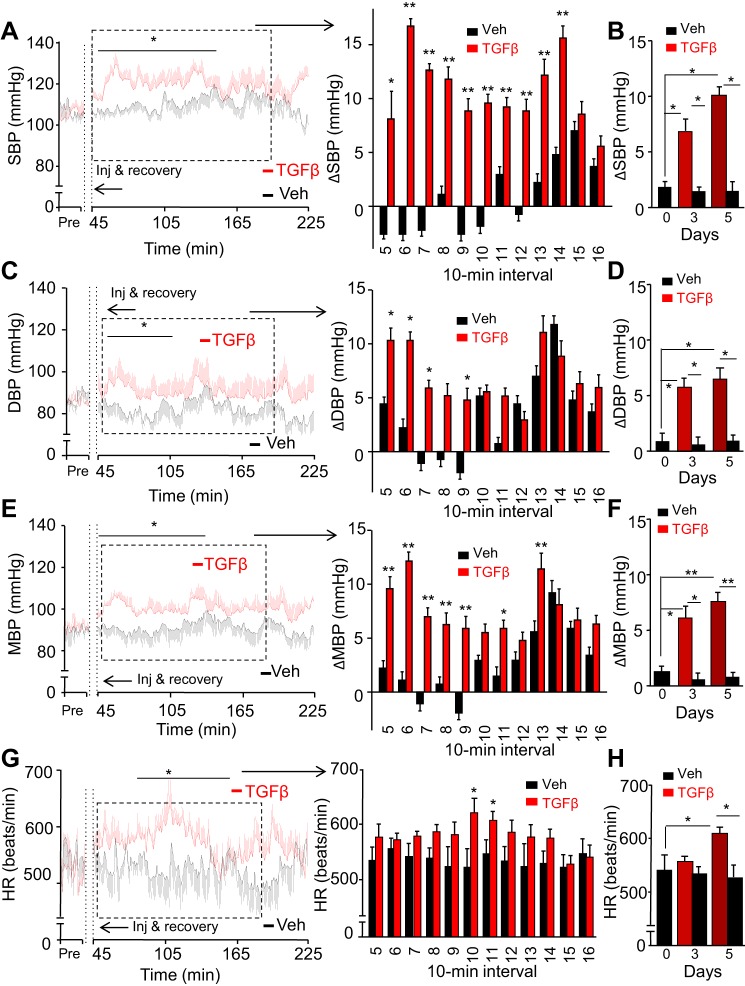Fig. 3.
Effects of chronic central TGFβ excess on BP and heart rate in mice. Standard C57BL/6 mice followed the same procedure as described in Fig. 2. After postsurgery recovery, mice were injected with TGFβ1 (4 ng) vs. vehicle (Veh) in the third ventricle every 12 h at the beginning of light and dark phases consecutively for 5 days, and SBP (A and B), DBP (C and D), MBP (E and F), and HR (G and H) were recorded before injection and postinjection. A, C, E, and G: curves at left present the minute-by-minute average SBP (A), DBP (C), MBP (E), and HR (G) on day 5 over a representative preinjection (Pre) period and a 3-h period after the injection in the light phase. Bars at right present changes (Δ) of postinjection SBP (A), DBP (C), and MBP (E) compared with the preinjection baseline and heart rate (G) over duration segment 5–16 of 10-min intervals for the time period outlined on the curves. B, D, F, and H: bars show 40-min peak changes (Δ) of SBP (B), DBP (D), and MBP (F) compared with the preinjection baseline and heart rate (H) in TGFβ- vs. Veh-injected mice in the light phase of days 0, 3, and 5. *P < 0.05, **P < 0.01, compared with time-matched Veh-treated group (A, C, E, and G) and between groups as indicated (B, D, F, and H); n = 6 mice per group. Error bars reflect means ± SE.

